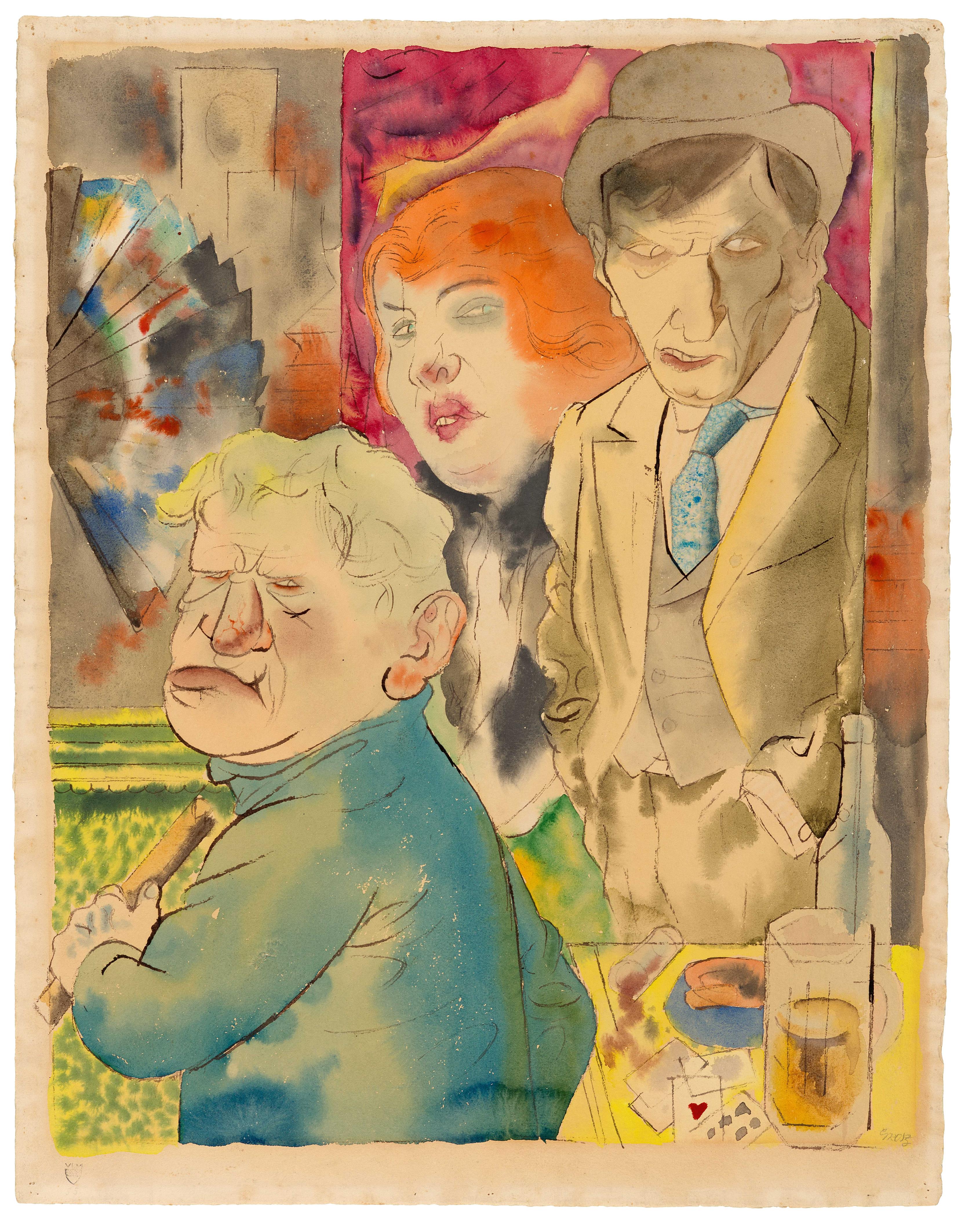George Grosz
Ganoven an der Theke
1922
Pen and India ink and watercolour on wove paper with watermark "Hahnemühle". 62.5 x 49 cm. Framed under glass. Signed 'Grosz' in pencil lower right.
Without a doubt, “Ganoven an der Theke” may be identified as an important sheet from the best period in George Grosz’s oeuvre.
Grosz’s depictions of social life around 1920 are icons of modernity: with Dada-esque and burlesque humour as well as a sizeable portion of cynicism, the artist deals with the horrors of the First World War, whose social consequences would become openly exposed during the Weimar period, particularly in a metropolis like Berlin. The German capital was synonymous with the “Roaring Twenties”, offering countless amusements such as theatres, cabarets, concerts, restaurants and bars – truly a city that never stopped. However, Berlin was also an insatiable behemoth, where glamorous excess collided with precarious living conditions.
Impartial in his malice, George Grosz caricatures the war’s cripples and profiteers, sailors and soldiers, wealthy bosses and betrayed wives, crooks, pimps and easy girls: thus the amoral, abnormal and economically deviant are put on display and gleefully exploited here. After the war, the currency’s depreciation continued, the black market flourished and inflation climbed to immeasurable heights, but the money kept flowing and – with glasses raised for a toast – Grosz’s figures celebrate having survived the war with a dogged yearning for their own downfall. It was not uncommon for domestic violence to end in murders of passion, and these are depicted with the same detail and delight as the sometimes more and sometimes less harmless scenes set in restaurants and bars, of which the present watercolour offers a striking example.
Three sinister figures in alert poses confront the viewer – have they been disturbed? The table with playing cards, a beer glass and a knocked-over shot glass attest to a lively evening in a shady ambience, which seems to have come to an end for the moment, at least. While the red-headed woman in the middle of the picture and the figure in a suit have taken up a threatening stance, the third “crook” is already within striking distance. His appearance with a cudgel in his hand, the thickset lips and ears Grosz has so aptly depicted in watercolour and, not least, the enlarged veins of his nose convey the far from subtle impression of a ruffian. Grosz has adeptly completed the masterfully conceived composition with fine details, such as the minimalist and virtuoso coloration of the Asian folding fans in the upper left corner.
Watercolours from the early 1920s, particularly in such an exceptionally large format and featuring such a luminous tonality are exceedingly rare and scarcely to be found on the market.
Certificate
Photo-certificate from Peter M. Grosz, Estate of George Grosz, Princeton, N. J., from 29 December 1986
Provenance
Galerie Kornfeld, Bern, Auction 26.6.1992, 150 ausgewählte Kunstwerke des 19. und 20. Jahrhunderts, lot 35; private collection, Saxon-Anhalt
Exhibitions
London 1997 (The Royal Academy of Arts), The Berlin of George Grosz: Drawings, Watercolors and Prints

